Georgia Aquarium
August 18, 2009


| After a very nice lunch and visit in the Sundial Room of the Westin, we went to the Aquarium which is just a few blocks away. At right is a view of the Aquarium from the top of the Westin Peachtree Plaza.
Above, Bobby and Suzanne are shown with a background of some of the fish in the big tank. Above their heads is one of Atlanta's famous whale sharks. |
When you enter the Aquarium, you go through a darkened tunnel with lighted tanks on each side. These fast-swimming jacks made a dramatic display as they continually swam past us. 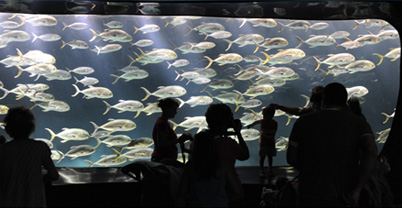 | 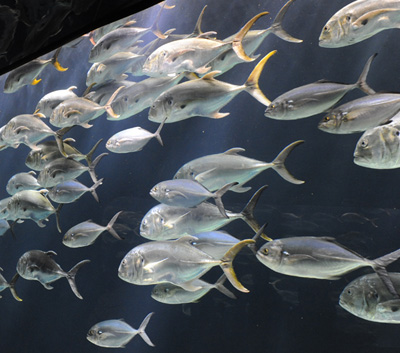
|

There was a popular tank where you could touch stingrays and sharks. The biologists went into the tank to feed them, and it was interesting to see the rays swim over the hands of the feeders to get the food to their mouths, which are on the bottom.

They had some healthy horseshoe crabs, but one of them was a little crazy. It kept turning itself upside down, and then scratching to upright itself again. That was the first time I had seen clearly what their underside was like. I had seen only dead horseshoe crabs on the beach. The little ray was about the same size as the crabs.
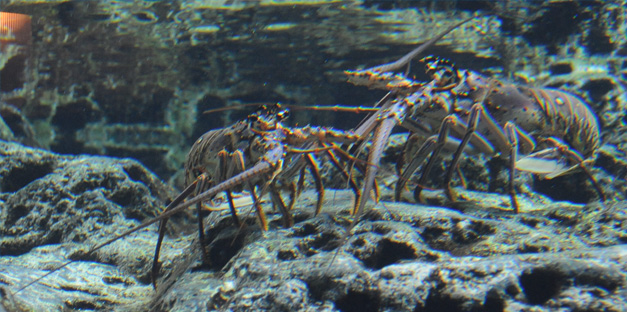 | One tank had some nice specimens of spiny lobsters, which brought back memories of scuba diving in the Florida Keys.  |
They had a nice large sea turtle, which brought back memories of yet another scuba trip to the Caymans. 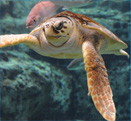 | 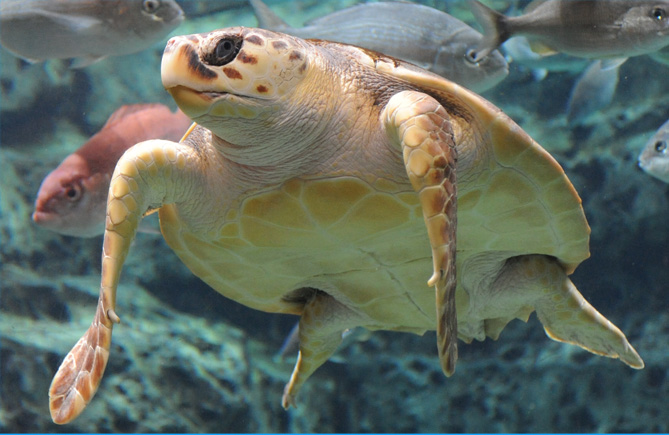 |
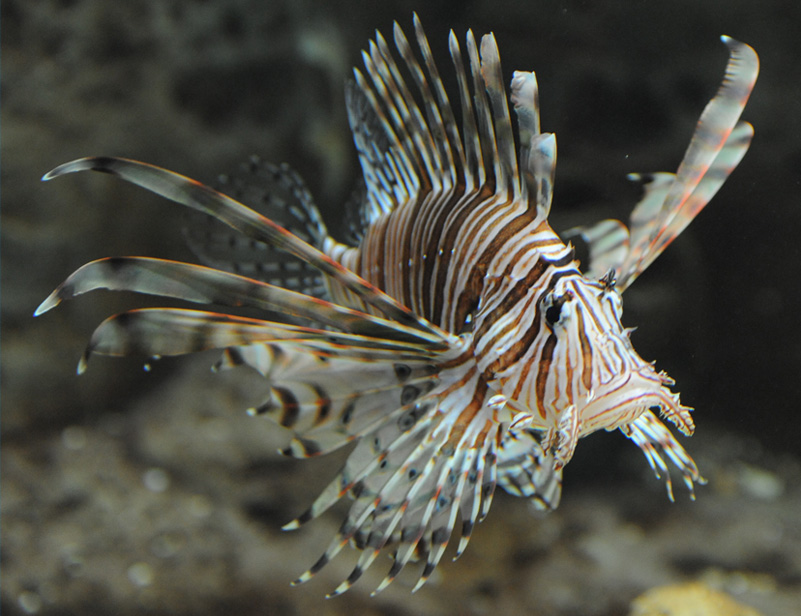
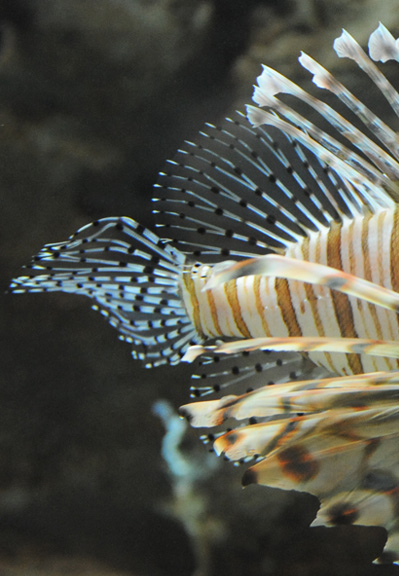 | They had a tank full of dramatic lionfish. After all our caution with scorpionfish in the Keys and the Caymans, these are really scary fish. At left is a section of the view below, and you can see that their fins are like a set of hypodermic needles. They have a potent and even fatal poison. They are native to the Great Barrier Reef of Australia, but their display was expressing concern that some of them have been released in Florida waters.  |

They had one environment, shown above, that reminded me of what I might see if I were underwater in a lake in Arkansas. There were gar and a big catfish. Then there were examples of fish you definitely wouldn't find in Arkansas waters. The one on the bottom right is a chiclid, one of an amazing variety of chiclids in a big aquarium. They populate inland lakes in Aftrica. I didn't catch what the orange and blue fishes were or where they are from.  | 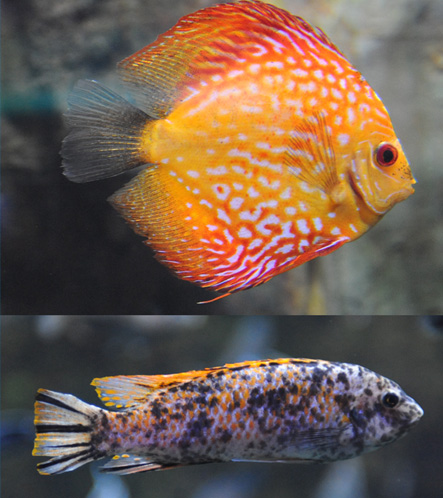 |

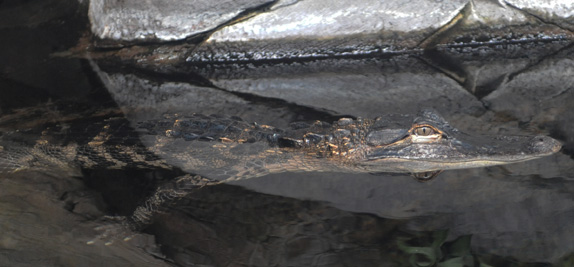 | These alligators lookd peaceful and content, and almost benign, but I guess that's what they would want you to think. |
Another real charmer of the fish world - not! With jaws like pliers, this piranha looks like it would like nothing better than to take a nip out of you. And his friends are standing by in case he gets started. |  |
How about this for a drastic change in personality?! 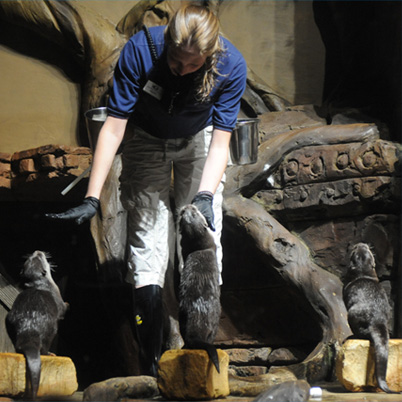 | 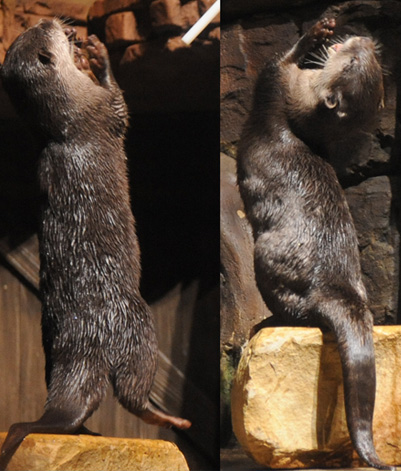 |
The river otters were a delight as always. They are so energetic and playful. We noticed three of them going over to the door to their enclosure and putting their heads down like they were praying. Then when the door opened to their trainers, we realized that they had heard what was going on behind the door and anticipated that it was feeding time. They were well-trained and ran to their designated rocks and sat up, but there was still a lot of individual personality as they practiced their eloquent begging routines.
 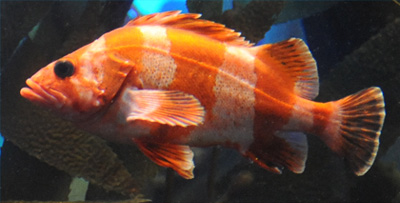 | There were lots of strange sea creatures. Mark and I had seen the orange crabs before in the Caymans. But I had never seen such an orange fish. It was in the kelp forest. And they had three baluga whales.  None of these was as wierd as the green seahorse below! |
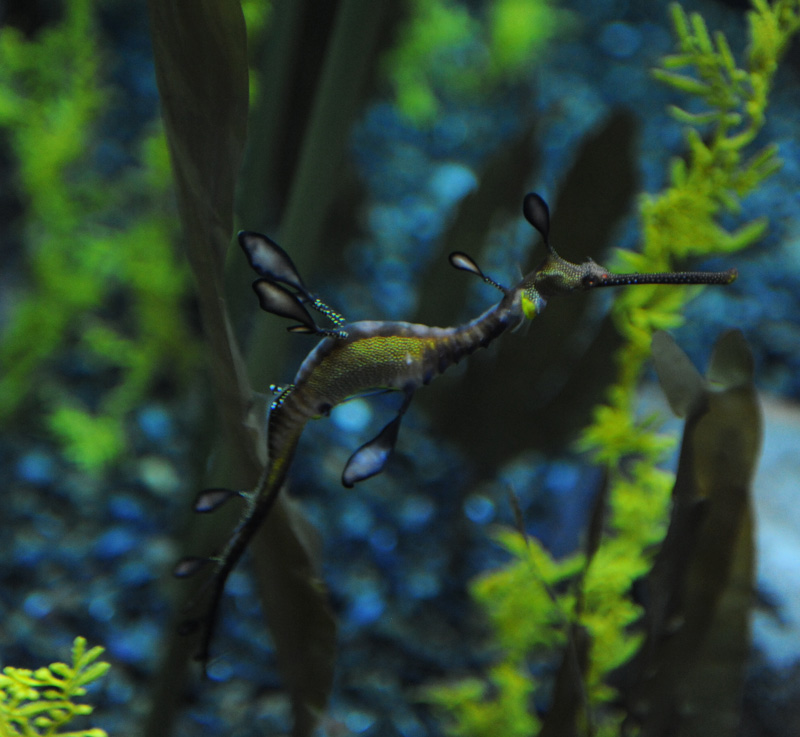
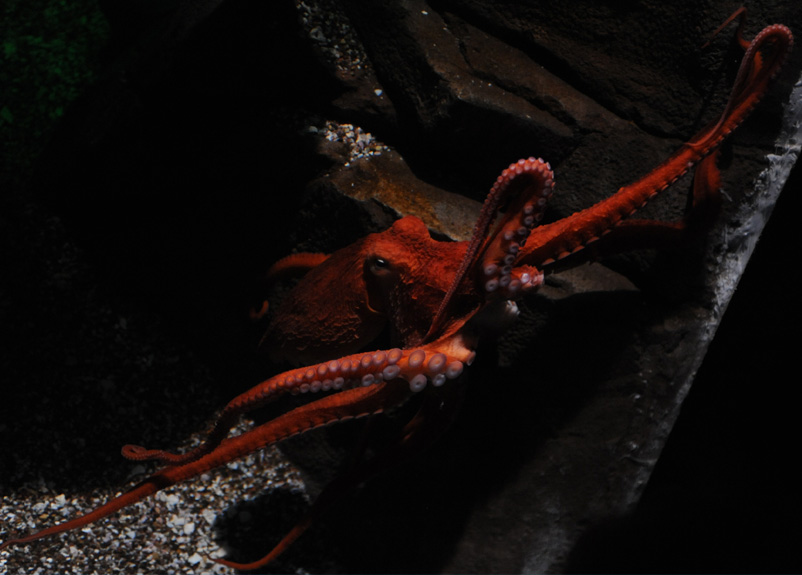
The giant octopus was an incredibly brilliant red. His body was maybe 30cm, so I guess that's a giant octopus. The ones we had seen scuba diving were about half that size. But the more remarkable thing was that when we had found one on the bottom, it was white and when it saw us, it turned blood red and scuttled off, like it was embarrassed. This one was blood red all the time. 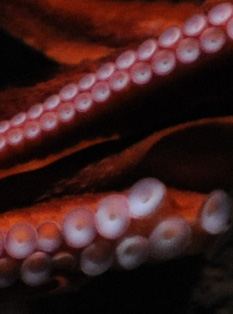 I had never seen suction cups like these up close before. |  |
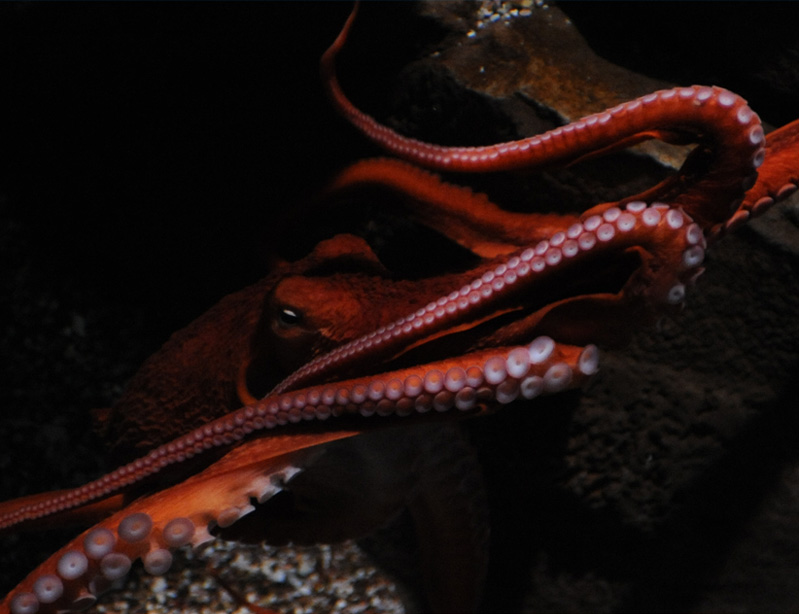

We went through the tunnel under the main tank and saw lots of large fish. We got to see this beautiful specimen of the blue tang, one of my all-time favorite fish. The memory of seeing a whole school of them on a reef at Pennekamp Park in the Keys is enough to send me into a reverie. We had seen them at Pillar Coral Reef in the Caymans and at Hen and Chickens Reef in the Keys as well. | 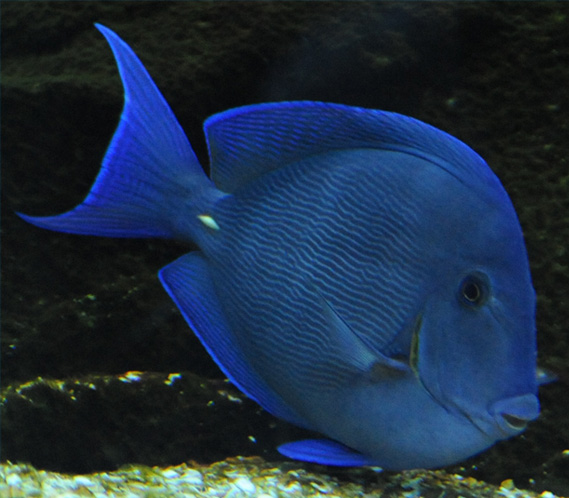 |

We moved on around and to the big viewing window of the great tank and watched the spectacle of all the big fish for quite a while. The composite picture at the top is a summary of what we saw. Certainly one of the most dramatic sights is that of the great whale shark. It is shown above near the top of the tank so you can see its reflection in the surface. Another memorable sight for me was the large school of Atlantic spadefish. We had seen some while scuba diving in Florida and they came close to us. It startled us that they were so large - maybe a foot to 18" in size, wheras their color pattern suggests that they are small reef fish when they are at a distance. | 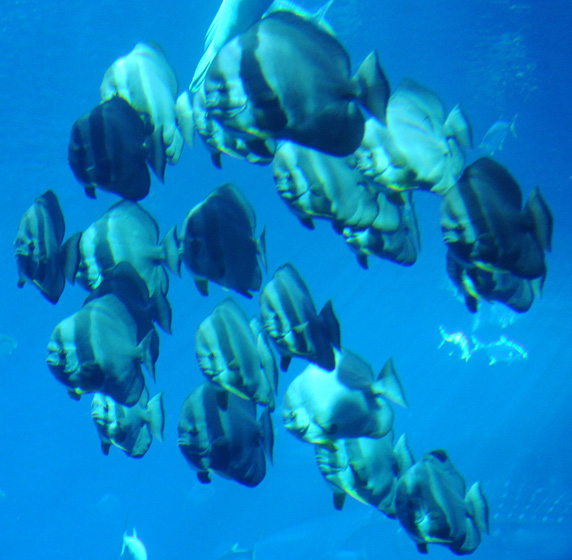 |
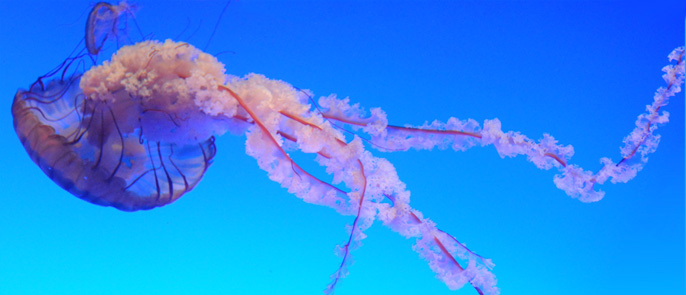
| The large jellyfish had a bizarre beauty and gave a bit of tranquility after the busy throng out by the big tank. |
I don't know what to call this, but it likewise gave a feeling of tranquility, watching its gentle, undulating motion. | 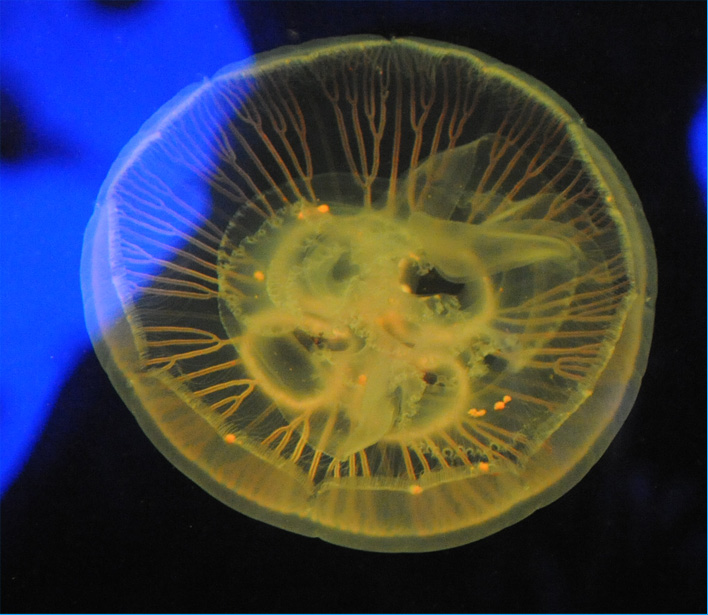 |

Our last place to visit was an open reef with wave motion to keep it oxygenated and simulate a living reef. It was delightful - there was live coral and hundreds of fish, but it was hard to photograph because of all the reflections off the curved acrylic walls. It was the most like the actual shallow reefs we have dived upon. | 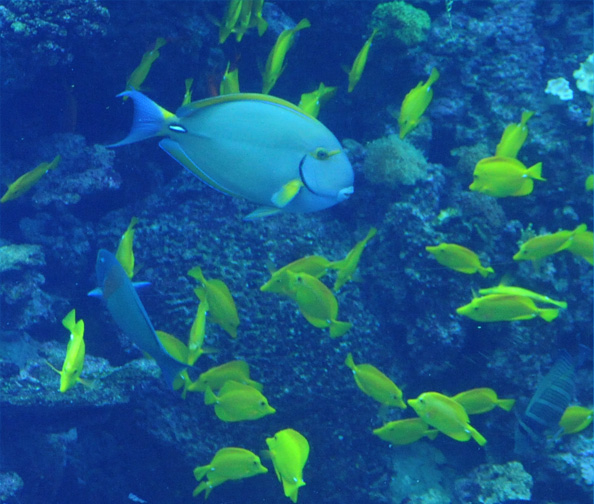 |
| The Coca-Cola Museum |
2009